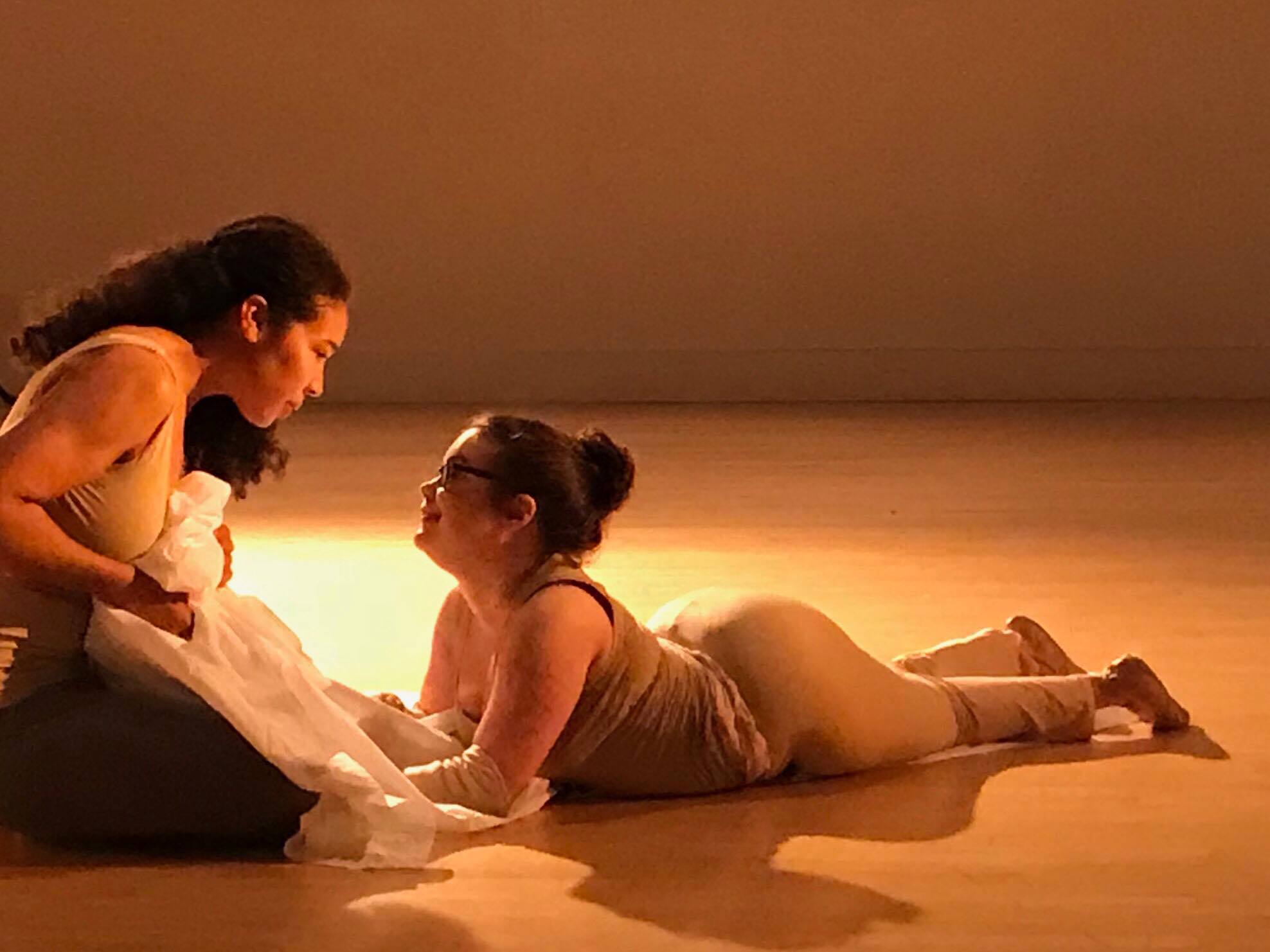CHICAGO—This post is part of a series of conversations with trans/genderqueer dancers to give you a broader idea of where we come from, what we’re up to, and how we navigate the dance community. With that said, meet Jess Martin!
Jess Martin, who previously went by Jessica, dances with Momenta in Oak Park, IL, and also produced and choreographs Exploration, an Evening of Dance, Discovery, Creativity and Fun, which concluded its third season this summer at Links Hall. Jess identifies their gender as non-binary and gender fluid, but usually uses the term non-binary because more people are familiar with it. Jess says, “Some days I wake up and I’m thinking, ‘oh, I feel more masculine today,’ and some days I feel more feminine, but then there’s other times where I feel more both.”
Jess began using they/them pronouns about two years ago, fairly recently in their 13-year tenure with Momenta. Momenta is like family for Jess, and like many families, getting everyone on board with their new pronouns has proved to be a tricky transition. “It’s still hard. A lot of people there call me ‘she.’ …I’m not gonna get mad at them… and I know it doesn’t come from a mean place, so I give them a little more slack.” It’s a delicate line to walk between wanting to be addressed correctly and leaving people enough space to learn and make mistakes. However, Jess can let their guard down a bit when they are working on their own choreography, where they find it is easier for people to use their correct pronouns.

In dance, respecting someone’s pronouns is only the first step. It has to be followed up by making sure the class provides space for people across the gender spectrum, including ballet. Jess says, “I hadn’t been to ballet in a while, but now I’m going back because it is such good training. …Ballet is so strict; anyone can come to a modern class and have their gender respected, but not with ballet.” Jess appreciates the strictness and tradition of ballet, they just wish the community could move on from the gender roles. Additionally, Jess uses a wheelchair, and says it is hard to find ballet teachers who will integrate their classes and make it possible for them to take class. In ballet, teachers usually just have Jess go around in circles, “They just give up and say, ‘Good job for going around.’ And I’m like, ‘For going around in a circle, you’re complimenting me?’”
While integrated dance classes can be hard to come by, Momenta, in conjunction with the Academy of Movement and Music, is a nationally-recognized leader in integrated dance. With their expansive mission statement, Momenta restages historic repertoire, and frequently integrates their work by collaborating with and casting dancers with disabilities. The company is semi-integrated, as opposed to fully integrated, because not all of their pieces include folks with disabilities, however they host many integrated workshops, concerts and classes. For more information, I’ve included a link to their website at the end of this post.
Jess takes class at a variety of accessible studios, such as the Lou Conte Dance Studio, and uses their extensive training and technical knowledge to create translations of the movement for their body. Jess says, “A translation can take many forms. Sometimes it’s literally taking a movement from the feet and translating it to the upper body….or in other cases anywhere on the body depending on the person’s mobility.” Translations are specific to people with physical disabilities, whereas dancers working with injuries or some invisible disabilities may modify the movement, but don’t necessarily require translations. According to Jess, translations are different from modifications because they create a new movement, rather than adjusting an existing one. Jess hopes to use their years of experience as a dancer to teach other dancers with physical disabilities how to create translations for their individual bodies.
Jess has a lot of suggestions to make the dance world more open to folks with gender differences and more accessible for dancers who are differently-abled. Jess says, “Put it on your website if you’re accessible or not. In my opinion everything should be accessible, but if you’re not, be honest. …I’d rather somebody tell me the truth than me show up and, oops! It’s not accessible.” Jess told me a story about a friend’s performance in an “accessible” space that turned out to be at the top of three flights of stairs. If you’re a studio or venue owner, do some research. How wide are your doorways? Is there a step or curb people need to traverse?
A tool Jess uses in their rehearsals that they want to see more of in classes is to start with an opening circle where dancers say their name, gender pronouns, and any injuries or movement limitations they are working with. When it comes to ballet specifically, Jess’s first request is that we allow for some choice in the uniform. That could be choosing between a “men’s” uniform and a “women’s” uniform, but options should be given at the very least.
Keep an eye out for Jess’s future projects, and for anyone interested in learning more about Exploration, you can email Jess at jlmartin02@comcast.net.
Information about Momenta and the Academy of Movement and Music can be found online here.
